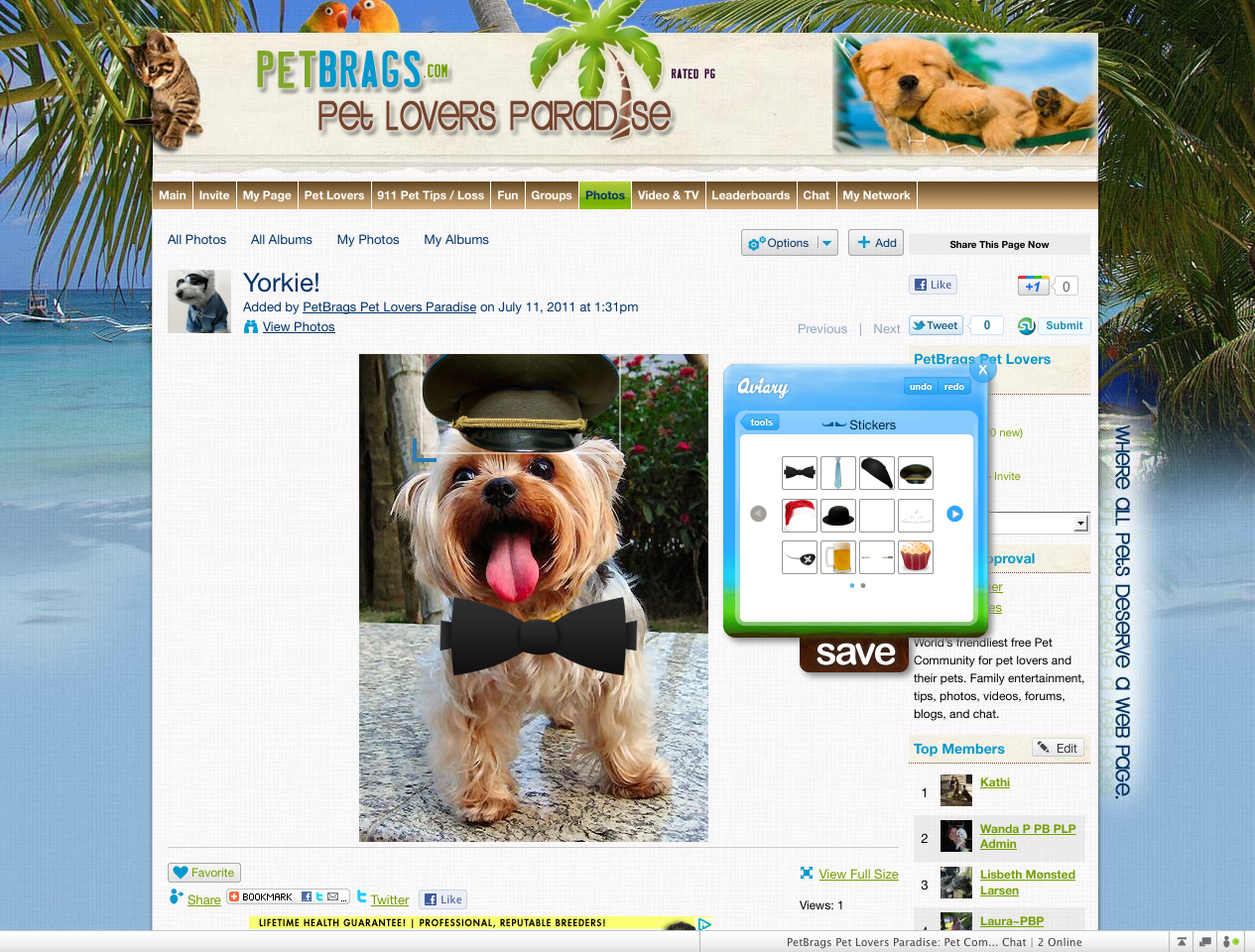Blogs
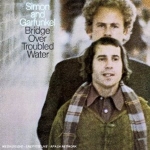 To most Brits, Frank Lloyd Wright is just the name in the title of a song on the last and greatest album of Paul Simon and Art Garfunkel, Bridge Over Troubled Water . To me he's one the world's greatest architects and a personal hero. Incidentally, Art Garfunkel dared Paul Simon to write a song about Frank Lloyd Wright and this song was the answer to that dare. Art Garfunkel studied to be an architect because he thought his career as a musician would never be successful!
To most Brits, Frank Lloyd Wright is just the name in the title of a song on the last and greatest album of Paul Simon and Art Garfunkel, Bridge Over Troubled Water . To me he's one the world's greatest architects and a personal hero. Incidentally, Art Garfunkel dared Paul Simon to write a song about Frank Lloyd Wright and this song was the answer to that dare. Art Garfunkel studied to be an architect because he thought his career as a musician would never be successful!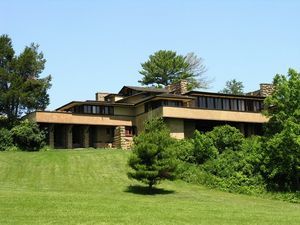 I've visited Wright's house in Oak Park, Chicago and seen many of his iconic buildings including the Guggenheim Museum in New York and his summer home Taliesin (left) in Wisconsin which I have visited. Wright's parents, William Cary Wright and Anna Lloyd-Jones, originally named him Frank Lincoln Wright, which he later changed after they divorced in honour of his mother's family, the Lloyd Joneses who had emigrated from Taliesin in mid-Wales. I recall visiting his grave in Wisconsin which was moved shortly afterwards to Arizona. Many people locally remembered Wright as famously eccentric and as a man who never paid any of his bills to local shops!
I've visited Wright's house in Oak Park, Chicago and seen many of his iconic buildings including the Guggenheim Museum in New York and his summer home Taliesin (left) in Wisconsin which I have visited. Wright's parents, William Cary Wright and Anna Lloyd-Jones, originally named him Frank Lincoln Wright, which he later changed after they divorced in honour of his mother's family, the Lloyd Joneses who had emigrated from Taliesin in mid-Wales. I recall visiting his grave in Wisconsin which was moved shortly afterwards to Arizona. Many people locally remembered Wright as famously eccentric and as a man who never paid any of his bills to local shops!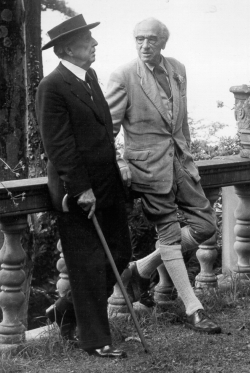 Imagine my surprise when I discovered that Frank Lloyd Wright had a connection with another eccentric architect - Sir Bertram Clough Williams-Ellis, creator of the Portmeirion village near Porthmadog in North Wales. Although born in England, Williams-Ellis' family claimed direct descent from Owain Gwynedd, Prince of North Wales. Frank Lloyd Wright visited Wales in 1956 to receive an honorary doctorate from Bangor University. He stayed with the creator of Portmeirion, Sir Clough Williams Ellis (right), whose work in Portmeirion Wright admired greatly. Both men wanted to design buildings that lived in harmony with the natural landscape. On the day of the Bangor University degree ceremony the great man, without telling Williams-Ellis, ordered a taxi to take him from Portmeirion to Taliesin in search of his Welsh roots. Clough panicked and immediately dispatched a fast motorcycle to apprehend the car, so that his guest could be awarded his degree.
Imagine my surprise when I discovered that Frank Lloyd Wright had a connection with another eccentric architect - Sir Bertram Clough Williams-Ellis, creator of the Portmeirion village near Porthmadog in North Wales. Although born in England, Williams-Ellis' family claimed direct descent from Owain Gwynedd, Prince of North Wales. Frank Lloyd Wright visited Wales in 1956 to receive an honorary doctorate from Bangor University. He stayed with the creator of Portmeirion, Sir Clough Williams Ellis (right), whose work in Portmeirion Wright admired greatly. Both men wanted to design buildings that lived in harmony with the natural landscape. On the day of the Bangor University degree ceremony the great man, without telling Williams-Ellis, ordered a taxi to take him from Portmeirion to Taliesin in search of his Welsh roots. Clough panicked and immediately dispatched a fast motorcycle to apprehend the car, so that his guest could be awarded his degree.Portmeirion is a unique place - used for many tv and film locations and is set in wonderful scenery in the Mawddach Estuary. I shall enjoy it so much more now I know of its connection with one of my heroes.
Today, we're excited to unveil the Aviary Extension..
Aviary provides a suite of creative online tools to help people create and improve upon photos, designs and audio clips. This Ning Extension allows you to edit photos directly inside the page. You can apply useful tweaks like cropping and red-eye reduction; edit the contrast, brightness and colors; add text to photos; and if youre feeling creative or playful you can add stickers as an overlay to put mustaches, hats and tons of other fun items directly onto the images of people in your photos.
If a picture is worth 1,000 words, imagine how many more words you will share when confronted with fun pictures like this:
Even more useful and fun: You can use the Ning Aviary Extension to apply these types of transformations to your profile photos, if you wish.
Whenever you hover your mouse over photos you are able to edit, youll see an option for Photo Stickers & Effects. Clicking that link will start up Aviarys editor and encourage you to apply updates, transformations and filters to your photo. Once youve completed the changes you want to make, click on Save and the modified photo will be saved back to the network.
The old Llanelli (Llanelly) market had a cafe which served faggots andpeas throughout the 1950's.
We'd catchthe 'Eynons' 'bus, based atTrimsaran,and head straight for the faggots and peas before shopping.
The cafe had oil-cloth covered tables which you sat at whilst eating. It was one of the first 'fast food' places in Llanelli, apart from the fish and chip shops.
I'm not sure whether the faggots were made on the premises or 'bought in'.
Will Davy Rees was a butter and eggs merchant in the area who also sold bacon and faggots. He came down to Fishguard on Thursdays, but the Wednesday market in Carmarthen was far bigger.
'Sammy Morgan', the fish and chip shop in Water Street, Carmarthen,sold faggots and peas, too.
Faggots are mounds of minced meat, wrapped in a caul, which is part of the lining of a pig's stomach.
Often, nowadays, the caul is dispensed with.The meat is shaped into balls andput into a pan to bake in the oven for an hour. Hot water, poured around the faggots, keeps them moist while they cook and produces a gravy.
Belly pork and pigs' liver with, perhaps, bacon is used to make the faggots. Sometimes a small piece of a leaner cut of pork is used as well.I don't like too much liver in faggots, becauseof the ehavy texture the liver gives. Breadcrumbs are used to bulk the meat out and lighten the mixture andminced onions, sage, pepper and salt add flavour.
The peas which accompany the faggots must be dried, definitely not tinned.
Years ago, I readabout the cheeses madein Nantycaws, Carmarthen. I've lost the articlebut, if I'm correct, the large rounds of cheese were wrapped inhazel-nut leaves, then in muslin cloths before being buried in the ground for a few months.
The story of cheesegoes backat least five thousand years. It was said to have been discovered by a horsemanin the Middle East.
His leather bag, containing milk, became over heated anda physical reaction occurred, resulting in a primitive form ofcheese. The milk curdled into solids known as curds,separatingfrom the liquid 'whey' mixture. This is what 'Little Miss Muffet' was enjoying when the big spider frightened her away.
The Romans became adept at cheese making and spread their skilland their empire,across Europe.
Early Welsh cheeses were made from the milk of goats and sheep andsoaked in brine.
Great value was placed on cheeses. Under the laws of Hywel Dda, in a divorce settlement the wife was awarded the cheeses washed in brine and the husband the cheeses that had been hanging. (I don't know which were the tastiest).
By the sixteen hundreds, cows milk was used instead of sheep and goats milk, producing a blander cheese.
DuringWorld War1 and 2, the government stepped in to control cheese making, which was a labour intensive process. For thisreason,no one was allowed more than 2 ounces a week of cheese.
Caerphilly is probably the best known of Welsh cheeses, but there are many other Welsh cheeses being produced now.
PS: Mice prefer chocolate.
Years ago, I readabout the cheeses madein Nantycaws, Carmarthen. I've lost the articlebut, if I'm correct, the large rounds of cheese were wrapped inhazel-nut leaves, then in muslin cloths before being buried in the ground for a few months.
The story of cheesegoes backat least five thousand years. It was said to have been discovered by a horsemanin the Middle East.
His leather bag, containing milk, became over heated anda physical reaction occurred, resulting in a primitive form ofcheese. The milk curdled into solids known as curds,separatingfrom the liquid 'whey' mixture. This is what 'Little Miss Muffet' was enjoying when the big spider frightened her away.
The Romans became adept at cheese making and spread their skilland their empire,across Europe.
Early Welsh cheeses were made from the milk of goats and sheep andsoaked in brine.
Great value was placed on cheeses. Under the laws of Hywel Dda, in a divorce settlement the wife was awarded the cheeses washed in brine and the husband the cheeses that had been hanging. (I don't know which were the tastiest).
By the sixteen hundreds, cows milk was used instead of sheep and goats milk, producing a blander cheese.
DuringWorld War1 and 2, the government stepped in to control cheese making, which was a labour intensive process. For thisreason,no one was allowed more than 2 ounces a week of cheese.
Caerphilly is probably the best known of Welsh cheeses, but there are many other Welsh cheeses being produced now.
PS: Mice prefer chocolate.
Maudie, my nine year old granddaughter, Harry and Oliver's sister, told methat she likes 'Toad-in-the-Hole' when they have it in school.
I startedthinking about the nameswe give to dishes, such as 'Hot Dogs' and 'Welsh Rabbit/ Rarebit'.
The term 'Welsh Rabbit' was first used in 1725, in reference to a toasted cheese mixture, (caws wedi pobi.)
Fowler said, in his 1926 'Dictionary of English Usage', thatthe correct termis 'Welsh Rabbit', not 'Rarebit', in the same way that 'Toad in the Hole' refers to sausages, not leaping amphibians.
Welsh Rabbit is afavourite dish of mine.The only thing I dislike about it is washing the grater afterwards.
It's simple to make. All youdo isgrate a quantity of Cheddar cheese, say 4 ounces or 125gms, into a bowl. Add 2 tablespoons of thick cream, a littlemustard, a few drops of Worcester sauce, pepper to season and mix well together. (Some people add a spoonful of beer or stout, butthe mixture should not be too wet).
Have ready two rounds of toast and spread the cheese on top. Place undera hot grill until the cheese bubbles. A fried tomato or poached egg would be good on top. Eat immediately, but don't burn your mouth on it, like I am wont to do.
(Food has to be piping hot if I'm toenjoy it. I had a course of acapuncture once, and theChinese doctor told me that warm food is easierto digest than cold, therefore better for the body.)
If I'm in a rush, I spread butterand ready-mixed mustard over the toast, placea few slices of cheese on top and let the cheese melt in the micro wave, (the 'poppeti ping', as they say in Welsh), for thirty
seconds or so.
Oliver was in Fishguard today, on duty in the Leisure Centre.He's doing extra shifts this week to pay for theholidayin Rhodes that he and Hannah are having.
Harry has worked on Newport Beach, Poppit and Whitesands recently and he's in Broad Haven tomorrow.The RNLI lifeguards are goingto Biarritzfor a surfing holiday during the first week of September.
'So I'll be off,' saysHarry.
My daughter stares at him. 'Coleg Sir Gar startsthe first week of September, and you're not missingthe start of term'.
Looking slightlymiffed but not beaten by any means,Harry disappears upstairs, to find thestill, quiet centre of his soul, I think, or at least to exchange a few words with Oliver.
A few minutes laterit's all sorted. Harry's driving and they're goingtoBiarritz during the last week of August. It doesn't matter that they've never drivenfurther than Cardiff before.
'All you have to do is follow the map. Ollie will be the navigator.'
'Ten minutes in the car and Oliver drops off', my daughter points out.
'We can put a sat nav in, just in case, but he won't', Harry decides. His tone is that of one who will broach no further discussions on the subject.
'Where will youstay?'
'There are loadsof places to stay out there', he says airily, waving his arm in a large arc, to describe the vast number of lodgings he imagines.
And there's a twist to the tale. They'retaking a friend who is in a wheelchair, recovering from anaccident.
'Where's the wheelchair going?' Emma wonders.
Patiently, as though speaking to someone who just doesn't 'get it', Harry says slowly, 'In the boot'.
My daughter turns to me and says, 'In the boot of the Clio'.
Harry turns to me. 'What's wrong with that?'
'What about luggage?'
I should have known, they won't be needing any.And they're taking another friend as well, to see to the patient. All in the Clio. A bit like 'Ten in a bed'.
I went to Kidwelly, or Cidweli, yesterday. It was not just for a 'jolly' but to meet 95 years old Eirwen Smith.
Mrs Smith is a relative of Nita Sybil Evans, the writer of the handwritten cookery book thatI bought twenty five years ago from a market stall.
Eirwen is a delightful lady and Kidwelly is a lovely old town with a castle.
Years ago, Kidwelly was known by different names, includingCatwelli.
After the Great Plague,it is believed the first surviving creature to walk the streets was a cat.
As a symbol of salvation, the cat was honoured by being included in the town's coat of arms.
Dylan Thomas must have been aware of this legend for, in 'Under Milkwood', Captain Cat's boat was the SS Kidwelly.
'Hen Fenyw Fach Cidweli' is a nursery rhyme about a little old woman who sells black sweets (losin du). She counts ten for a halfpenny, but eleven for the narrator.
Like most rhymes, this is related to an actual incident. The 'old woman'might have been Hawise de Londres, daughter of Thomas de Londres, Lord of Kidwelly in the thirteenth century.
Hawise was the rightful owner of the castle (the Castellan) but, in those lawless times,it was snatched fromher.
Disguised as an old woman, she entered the castle to sell sweets, hoping to glean information that might help her regain the castle. Hawise's story has been immortalised for seven hundred years and more in a child's rhyme.
Yes, Dewi and Mona are on another road trip! We've added one more notch to our Waldo Map creds, which we'll post about shortly. Suffice it to say, our first da7y was an adventure. Stay tuned!
Mona and Dewi
Consider the following sentences... 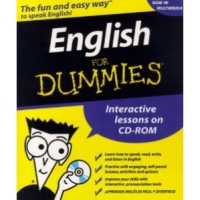
1. The bandage was wound around the wound.
2. The farm was used to produce produce.
3. The dump was so full it had to refuse more refuse.
4. We must polish the Polish furniture.
5. He could lead if he would get the lead out.
6. The soldier decided to desert his dessert in the desert.
7. Since there was no time like the present, he thought it was time to present the present.
8. A bass was painted on the head of the bass drum.
9. When shot at, the dove dove into the bushes.
10. I did not object to the object.
11. The insurance was invalid for the invalid.
12. There was a row among the oarsmen on how to row.
13. They were too close to the door to close it.
14. The buck does funny things when does are present.
15. A seamstress and a sewer fell down into a sewer line.
16. To help with planting, the farmer taught his sow to sow.
17. The wind was too strong to wind the sail.
18. After a number of injections my jaw got number.
19. Upon seeing the tear in the painting I shed a tear.
20. I had to subject the subject to a series of tests.
21. How can I intimate this to my most intimate friend?
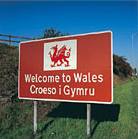 Now, let's compare that with the Welsh language, which, unlike English is almost completely consistent in its pronunciation rules. If you see place names local to me like Dwygyfylchi, Penmaenmawr, Penisarwaen, Llanrug, Froncysyllte, Llanfairfechan, Abergwyngregyn and Llanfairpwllgwyngyllgogerychwyrndrobwllllantysiliogogogoch - you just need to apply the rules, cover the surrounding area with waterproof sheeting and read them out.
Now, let's compare that with the Welsh language, which, unlike English is almost completely consistent in its pronunciation rules. If you see place names local to me like Dwygyfylchi, Penmaenmawr, Penisarwaen, Llanrug, Froncysyllte, Llanfairfechan, Abergwyngregyn and Llanfairpwllgwyngyllgogerychwyrndrobwllllantysiliogogogoch - you just need to apply the rules, cover the surrounding area with waterproof sheeting and read them out.
However, in almost every other aspect Welsh presents so many challenges to learners. The name of this land of Wales in its native tongue is Cymru but depending on context it might be Gymru or Nghymru. Similarly I do my local shopping in Bangor which could also be Fangor or Mangor. Counting should be easy: one, two, three, four but actually it's un, dau (or dwi), tri (or tair), pedwar (or pedair). Twenty is dau deg but sometimes ugain. Are you losing the will to live yet? Don't ask me how many ways you can say yes or no - I'm up to twenty or so but there are many more, again according to context.
So why am I a Welsh learner? Because hiraeth drew me home to Wales and although all Welsh people (round here 3 in 4 are first-language Welsh) do speak English, I want to connect with my roots and speak my grandparents' and mother's first language. Cymru am Byth!

